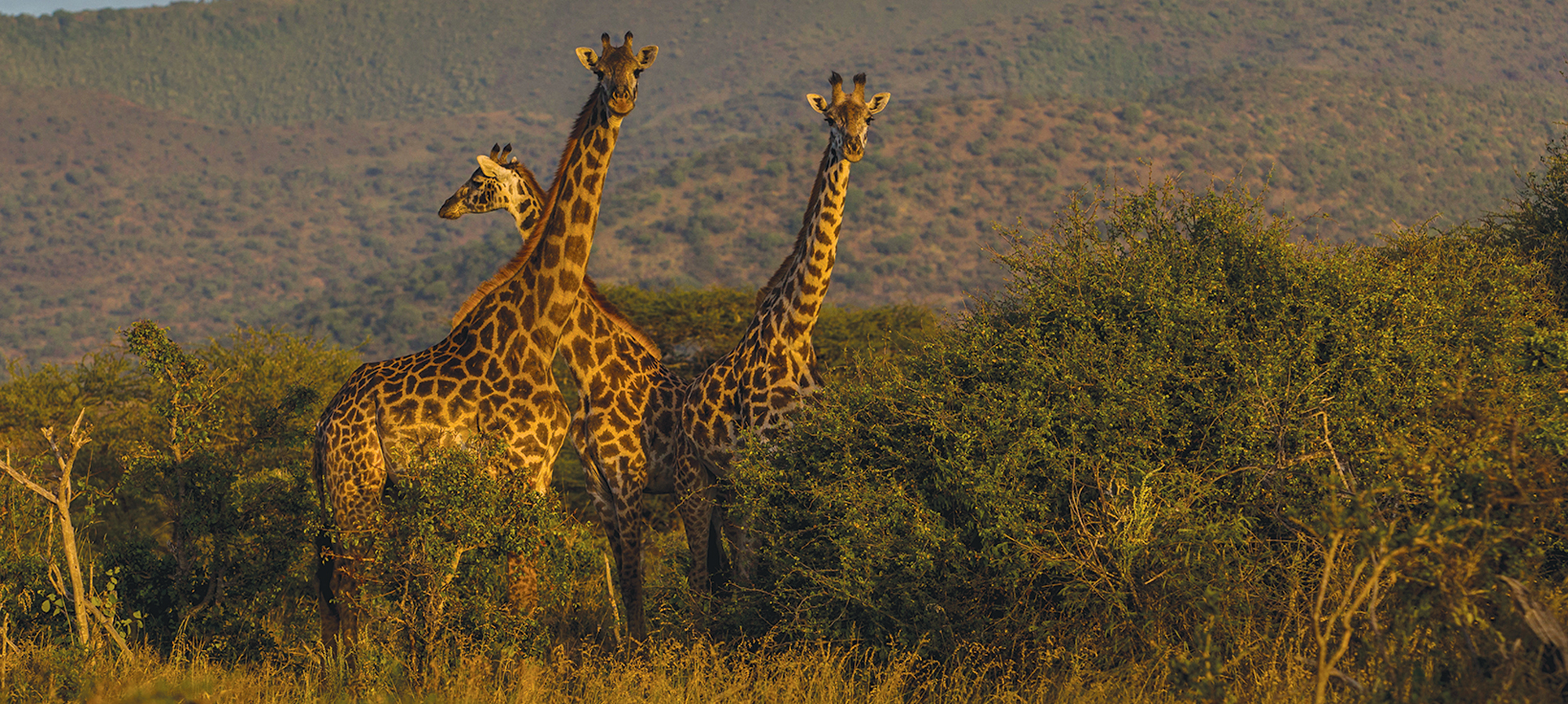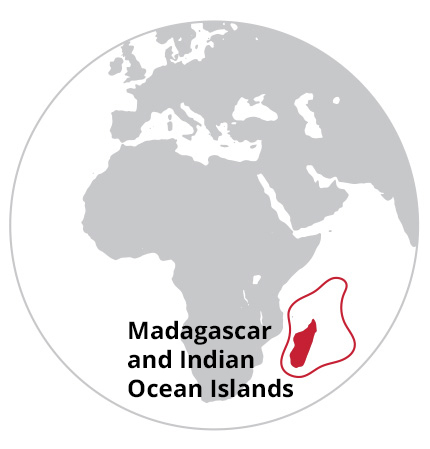Nature-Based Solutions to Address Climate Change
Protection and restoration of tropical forests and other natural ecosystems could make up 30 percent of the greenhouse gas emission reductions necessary to avoid climate-related disasters that would disproportionately affect the poor, according to climate experts. CEPF supports projects that conserve or rehabilitate natural forests, wetlands and coastal ecosystems as cost-effective means for mitigating the potentially devastating effects of climate change and extreme weather events.
Eastern Afromontane Biodiversity Hotspot

The Chyulu Hills of Kenya are quintessential East Africa—lush green cloud forests overlooking savannah grasslands populated by iconic African wildlife such as elephants, giraffes, and lions, and communities of Maasai people clad in traditional red and plaid fabrics.
The Kenya-based Maasai Wilderness Conservation Trust (MWCT) has been working for years to protect this extraordinary environment for the benefit of the local communities and wildlife through activities focusing on ecotourism, land conservancy agreements, and employment of local scouts and rangers, and by establishing a REDD+ project. (REDD, or reduced emissions from deforestation and forest degradation, plus the role of conservation, sustainable management of forests and the enhancement of forest carbon stocks.)
The REDD+ project is designed to pay the residents of the area for maintaining the forest, which stores carbon that could contribute to climate change if the forest were destroyed. Payments to the community result from the sale of carbon credits on the international voluntary market. Safeguarding the forest also has the added benefits of protecting the source of vital fresh water and maintaining habitat for a multitude of species.
To bring the project, which was more than six years in the making, to fruition, MWCT needed to verify the carbon credits generated by the forest by completing the necessary greenhouse gas emissions reduction quantification, verification, and social and biological monitoring. This is where CEPF stepped in. A grant of US$100,000 from CEPF helped cover the cost of verification and enabled the project’s first carbon credit sale. In September 2017, the sale of 19,800 credits was made to Tiffany and Co., providing US$237,600 of revenue for the community.
The revenue from the project contributes to the local economy and supports additional conservation activities, such as ranger recruitment and training, anti-poaching operations, and human-wildlife conflict monitoring, resolution and prevention. The funds also address community needs, particularly in education and health care, with initial funds being used to hire new teachers and provide basic school supplies.
“Community members and leaders have been delighted to see the first funds being made available and to be able to direct those funds towards supporting their priorities. The carbon sales help to demonstrate that conservation can contribute to community well-being and the local economy,”
“Community members and leaders have been delighted to see the first funds being made available and to be able to direct those funds towards supporting their priorities. The carbon sales help to demonstrate that conservation can contribute to community well-being and the local economy,” said Samson Parashina, community leader and chairman of MWCT.
Madagascar and Indian Ocean Islands Biodiversity Hotspot
Though its name may sound less than sheltering, southwest Madagascar’s Bay of Assassins has a lot to offer the people and other forms of life that call it home. Its mangrove forests, which are part of the Velondriake Locally Managed Marine Area, are habitat for shellfish, serve as breeding grounds for fish species that are commercially important, and constitute a source of wood for fuel and construction. The mangroves also have a particularly high capacity for storing carbon, as well as serving as a buffer from storms and tsunamis.
Overharvesting of wood for building and for commercial use, however, has severely degraded the mangroves. The Velondriake Association, a community-based organization, seeks to protect and restore the mangroves, in part through a CEPF grant.
United through a mangrove carbon project known as Tahiry Honko (“preserving mangroves” in the Vezo local language), 10 villages in the Bay of Assassins began replanting seedlings in 2017. Nearly 78,000 mangrove seedlings were planted that year by 100 volunteers, and more than 19,000 were planted in the first quarter of 2018.
“Communities in the Bay of Assassins depend on mangroves for their daily needs,” said Lalao Aigrette, deputy national lead for the Blue Forests Program of Blue Ventures, which co-manages the Velondriake Locally Managed Marine Area with the Velondriake Association. “The CEPF grant has helped local villages in Bay of Assassins not only to restore their degraded mangroves by replanting, but also to ensure protection of the forests by supporting regular mangrove forest patrols.”
To strengthen community ties, meals were served to volunteers and plantings were organized around celebrations for Mangrove International Day and International Women’s Day.
Restoring the mangroves requires time and ongoing effort, both through the development of local laws and conservation plans and through recurring plantings. The seedlings planted through the project so far have an average annual survival rate of 80 percent.
In addition to reforestation zones, Tahiry Honko also established sustainable management zones and permanent mangrove reserve zones that prohibit the harvesting of mangrove wood. Communities worked with the Fisheries and Forestry Department, local authorities, and nongovernmental organizations to establish guidelines for mangrove use and management.
Photo Credits
Giraffes, Chyulu Hills, Kenya. © Charlie Shoemaker
Women planting mangrove trees, Bay of Assassins, Madagascar. © Velondriake






